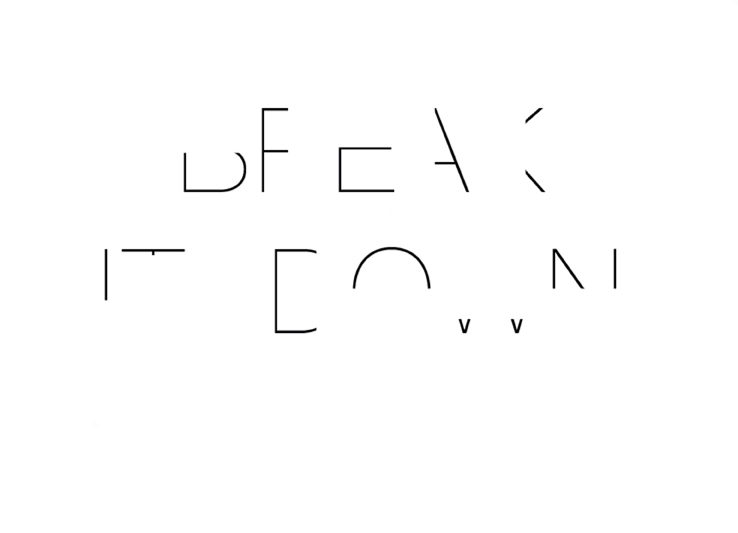Break It Down is the title of a story by the writer Lydia Davis. In it the narrator desperately tries to quantify a short and painful and love affair in monetary terms. He spent ten days, six hundred dollars, and only came away with an old shirt. The instinct to “break it down” by materializing an intangible and complex feeling into accessible units was the impetus for this exhibition. Breaking something apart makes it manageable.
Break It Down, the exhibition, brings together twenty artists who, like Davis, employ deconstruction as a device for understanding. All the artists shown share a process that involves deconstruction—whether of a system, an object, an image, or an idea. Break It Down is an exhibition that explores complexity through simplicity. It examines deconstruction as both a productive and destructive act. In representing this paradox, Break It Down asks: How do we stop before we’ve gone too far?



































